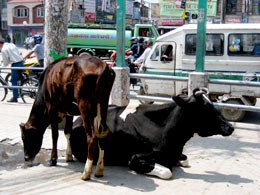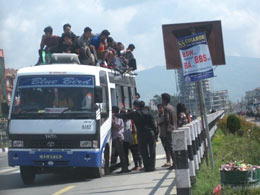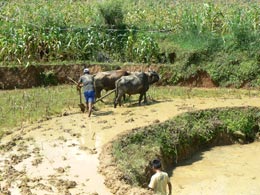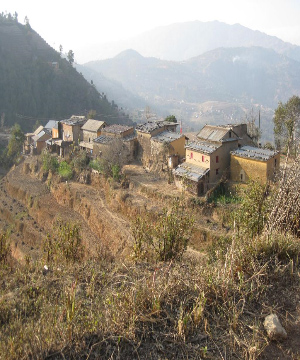About Nepal Find out more about the country...
Basic Facts About Nepal
Nepal is a landlocked country of 28 million people squeezed between two giants: China and India. Its geography flows from the towering Himalayan mountains in the north to the fertile plains of the south. Literacy has risen but women are still below 50%. Religious life is dominated by Hinduism (80%) with Buddhism (15%) having a significant influence while Christians and Muslims each comprise about 2% of the population.
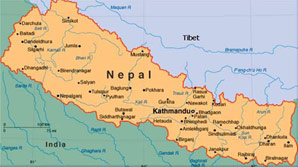
Nepal's Resources
As a landlocked country with few natural resources, and overshadowed by its giant neighbors, India and China, Nepal has little opportunity to develop economically. Annual monsoon rains are the life blood of the country's agriculture. But they are often also destructive. Capturing this abundant water could generate more than sufficient electricity and potable water. Subsistence agriculture dominates the economy. Prices for food and fuel continue to rise as the country's economy stumbles along.
Nepal's Government
Nepal's identity as the world's only Hindu kingdom was radically altered when a 12 year Maoist insurrection resulted in the creation of a secular republic in 2007. A new constitution was finally approved by the temporary legislature in 2015, but disputes over the division of political power has stymied its implementation. The accompanying political instability amplifies the people's difficulties by preventing any coherent economic or cultural policies. Yet the people continue to work hard, carving terraces out of the mountains for their crops, gathering fodder for their animals, and hoping for fresh leadership and opportunity.
Photo Gallery
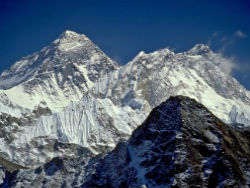
Tourism is an essential economic ingredient. Each year, thousands of trekkers and climbers journey to the Himalayas. Most prestigious is the hike to Mount Everest base camp. At 17,500 feet, it takes about 6-7 days to hike there from the nearest airport and road.
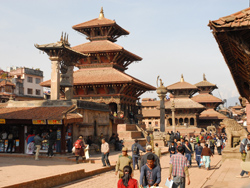
The landscape of Nepal is dotted with temples. The population is 80% Hindu and 15% Buddhist. Many temples serve both religions.


